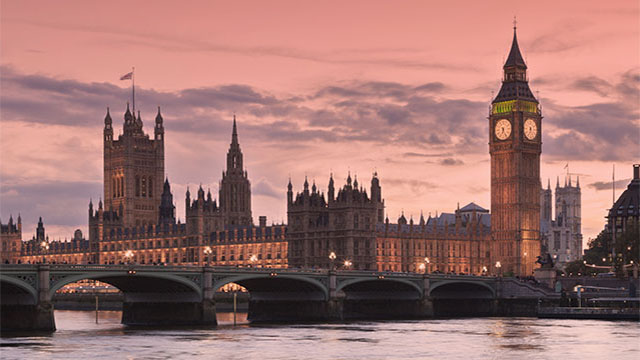Next year, businessmen will have something to celebrate on May Day. Better known for anti-capitalist anarchy, 1 May will see investors Europe-wide welcoming the Czech Republic’s entry into the EU, bringing with it an estimated ¤150m worth of investment opportunities in Czech offices.
UK investors are eyeing the Czech Republic’s real estate market with all of the excitement of a kid at Christmas. Prague’s property sits like a wrapped present awaiting investors, who believe they can race into the country with confidence.
Walk into the plush modern offices of any Prague agent and you can almost sense the anticipation. Traditionally, investors have shied away from the high risks associated with investing in the former communist block, opting instead to wait for the transparency that EU status will bring. But with neighbouring Germany and Austria showing huge interest in the Prague market, will UK investors greedily tear off the glitzy wrapping paper only to find the box is already empty?
Home markets
Figures show that German and Austrian investors dominate the market, representing around two-thirds of all investment in the Czech market (see chart). And they have increasingly looked east as their own markets have continually underperformed.
“Prague is only two or three hours down the road for them,” says Angus Wade, a director of Jones Lang LaSalle’s capital markets group in Prague. “They can pick up a property and look to get good returns,” he explains.
This is in sharp contrast to the behaviour of UK investors. They are interested in the market, but many lack the bravado to jump into what is essentially an unknown and largely untested market. Risks are high and 20-year leases are rare.
As Nick Tyrrell, head of European research at Deutsche Bank Real Estate, said at the recent CEDEM conference, the world loves the central European property market for its attractive yields and familiar standards but its lack of transparency, legal risks and quality of construction put them off. “The question is,” he says, “do the benefits outweigh the risks?”
JLL’s Wade is more forthright, believing the problem is UK investors’ lack of adventure. “They cannot look further than the end of their nose,” he says. “They would rather buy a second-rate building in Darlington than a first-class one in Prague,” he adds.
While UK investors dither, Prague’s property market is maturing fast. Yields are sharpening, with prime offices reaching 8.5% and industrial and retail offering yields of 10% and 8% respectively.
This contrasts sharply with the picture last year. Wade says prime office yields stood at the 9.25% mark last year, “an incredible drop for just one year,” he comments.
Yields converging
Most market commentators believe yields will continue to sharpen, eventually converging with those in western Europe. It could take up to five or six years for the gap to close, believes Martin Turza, managing director of King Sturge’s Prague office, but it will happen.
He believes that, in the next two years, up to 2% could be shaved off yields. “Investors looking at the Czech market think the people here still live in trees, but many things are changing,” he says. “We have a very healthy market, and increasingly investors are showing a preference for Prague.”
The figures back this up. In 2002 a total of ¤180m had been invested in the Czech Republic real estate market (see investment chart). In comparison, in the first six months of this year around ¤380m has been invested, a massive 200% hike, taking investment back to levels seen before the floods of 2002.
Consequently, those hoping to pick up a bargain may be disappointed. As far as pricing goes, EU accession is a certainty and most investors have already considered this in their valuations. As a result, good stock has already become scarce, and those already owning property are sitting tight, waiting to see where the market takes them, says Turza’s colleague Michael Edwards.
“People know we will be in the EU so owners have held onto property until yields are at EU levels,” he explains. As a result, Edwards does not expect to see a mad rush in 2004.
Occupiers are preparing already, with western European companies seeking space in a bid to find low-cost premises. With EU status, most seem to be realising that having a headquarters in Prague is a viable option, says Edwards. “They’ve started to question why we should pay enormous rents in western Europe when reasonably close by there is a good, qualified labour force at around an 80% cost reduction,” he adds.
Lukáa Schirl, country manager at JLL, points to DHL’s decision to move 500 of its IT people to Prague. It is a move others are looking to copy and, over the past 12-18 months, Schirl has noticed many western companies centralising their back offices.
“Central Europe is one of the regions they are looking at. There is enough of a labour force to support it and there are lower costs.”
Developers have tried to keep up with the renewed interest. Protecting Prague’s historic core has all but ruled out city development, but building has continued in surrounding areas.
Regions such as Prague 4 and Prague 5 to the west of the city, and the D1 corridor off the main motorway to the east of Prague, have become increasingly popular with occupiers (see box). Developers are also looking again in the Prague 8-Karlin, which was badly affected by last year’s floods.
On the Charles Bridge on a late summer day it is hard to associate the Vltava river with menace, but Prague agents tell a different tale. Most occupiers have now returned to their offices after floods which wrecked nearly a fifth of all modern offices.
This area will be improved by city authority plans to upgrade flood prevention, helping to heal the psychological scars inflicted on many occupiers as a result of the damage.Some commentators are murmuring about oversupply, in Prague 5 in particular, but part of this is the city playing catch up as it tries to shed its communist past, says Omar Sattar, DTZ’s Czech managing director. “They’ve tried to cram in a lot of development and catch up with western Europe,” he says. “It’s been 13 years, but we are not quite there yet.”
|
Czech Republic statistics |
|
● The forecast for GDP is for a 3% year-on-year increase, set to rise steadily to 4.7% by 2007 (compared with 2.3% in the Eurozone) ● Unemployment continues to rise steadily, and is predicted to reach 10% this year from 8.5% in 2002 ● Inflation should drop to 1%, plummeting from4% in 2000 ● The Czech crown grew 9% against the Euro over the past year a trend that is set to continue ● Foreign direct investment has steadily recovered from the fall in 2000, and grew by $100m in 2002 to reach $5bn |
|
Source: Czech Statistical Office, Oxford Economic Forecasting |
|
Prague statistics |
|
SUPPLY The city has 1.3m m2 of modern office space comprising 779,000m2 new build and 542,000m2 quality refurbished space ● Prague 4 saw the greatest increase in stock in 2002, with around 90,000m2 of development ● Prague 5 is hot on its heels, with a number of major schemes receiving planning permission and awaiting prelets DEMAND ● First quarter take-up was around 55,000m2 with nearly a third the result of deals involving Cesky Mobil at Vinice (12,000m2), Unilever at Thámova 18 (3,500m2) and Hewlett Packard at BB Centrum C (4,600m2). ● Take-up for 2002 exceeded expectations, reaching 180,000m2. Market commentators expect a handful of large deals will see a repeat performance this year ● Vacancy rate at the end of Q2 2003 was 10% ● 2002 saw rental levels stabilise, with prime rents for central space at ¤18 per m2 a month and¤13-15 per m2 a month for good suburban space ● Incentives could increase, but headline rents are expected to remain stable |










